Switch Settings
- From the navigation pane, click Venues and select a venue.
-
In lower-right corner of the
venue Overview page, click Settings and then
select Switch Settings from the drop-down.
The Switch Settings page appears. By default, the General tab is displayed.
Switch Settings 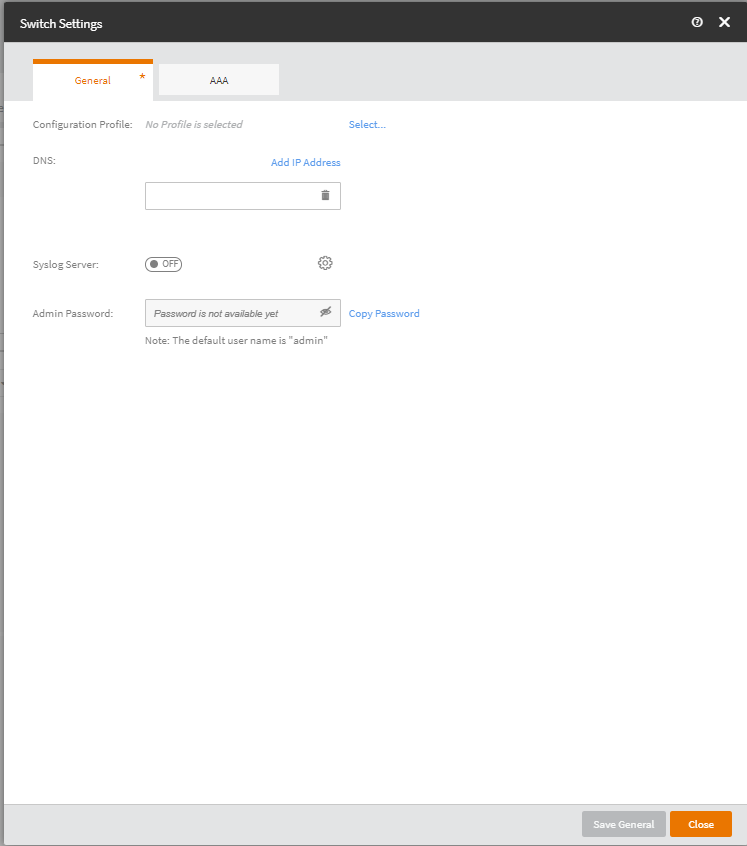
-
In the Configuration Profile section, click
Select to select a configuration profile.
You can change and/or add a configuration profile. Click Add configuration profile to add a switch configuration profile.
- In the DNS, click Add IP Address and enter a valid IP address
- (Optional) Toggle the Syslog Server switch to ON and then enter the IP addresses of the Syslog Server. After entering the IP addresses for server 1 and server 2 click OK.
- Select a configuration profile from the Configuration Profile list.
-
Click the eye icon to view the
admin password. Click Copy Password to copy the password.
The Admin password shown can be used to access CLI interface locally at the switch. The username is admin.
- Click Save to save the switch settings.
You must configure RADIUS or TACACS+ server in order to enable authorization or accounting.
-
After Step 2, select the AAA
sub-tab.
The Servers & Users page appears.
AAA Servers and Users 
-
Click Add RADIUS Server to configure a RADIUS
server.
The Add RADIUS Server dialog box appears.
Add RADIUS Server 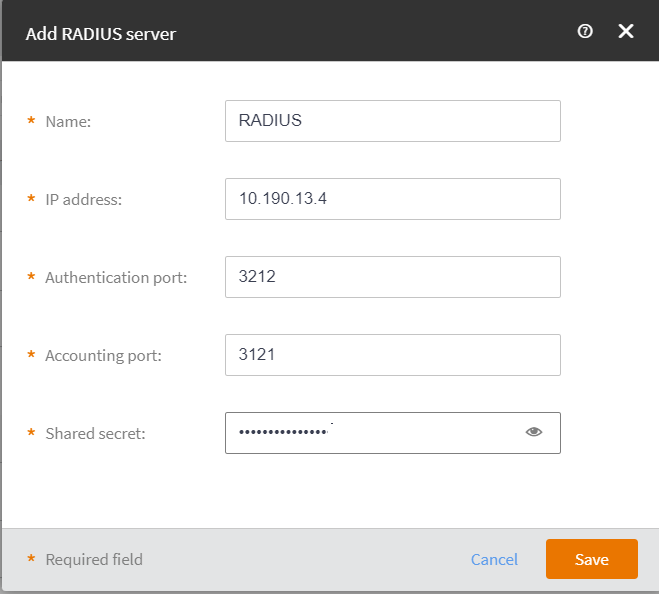
-
Complete the following:
- Name: Enter a name for the RADIUS server.
- IP Address: Enter the IP address of the RADIUS server.
- Authentication port: Enter the authentication port.
- Accounting port: Enter the accounting port.
- Shared secret: Set a shared secret.
- Click Save.
-
Click Add TACACS+ Server to configure a TACACS+
server.
The Add TACACS+ Server dialog box appears.
Add TACACS+ Server. 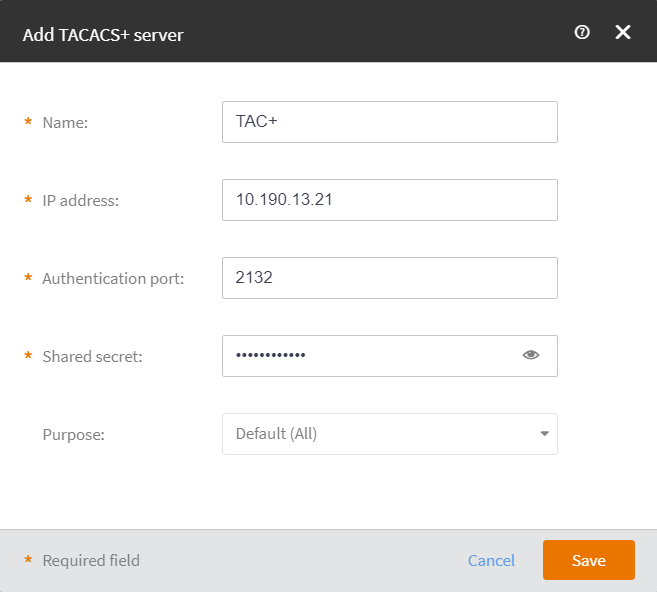
-
Complete the following.
- Name: Enter the Name of the TACACS+ server.
- IP Address: Enter the IP address of the TACACS+ server.
- Authentication port: Enter the authentication port.
- Shared secret: Set a shared secret.
- Purpose: Select one of the purpose from the drop-down: Default (All), Authentication, Authorization , or Accounting.
- Click Save.
-
Click Add Local User to add a local user.
The Add Local User dialog box appears.
Add Local User 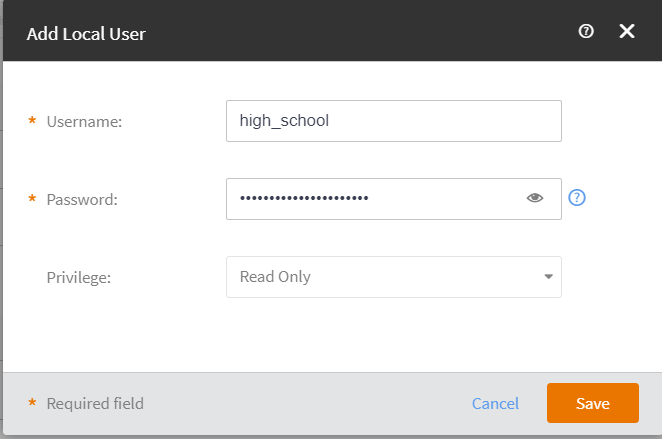
-
Complete the following.
- Username: Enter a username.
- Password: Set a password.
- Previlage: Set previlage from one Port Config, Read Write, or Read-Only
- Click Save.
-
Click the Settings sub-tab.
The Settings page appears.
AAA Settings 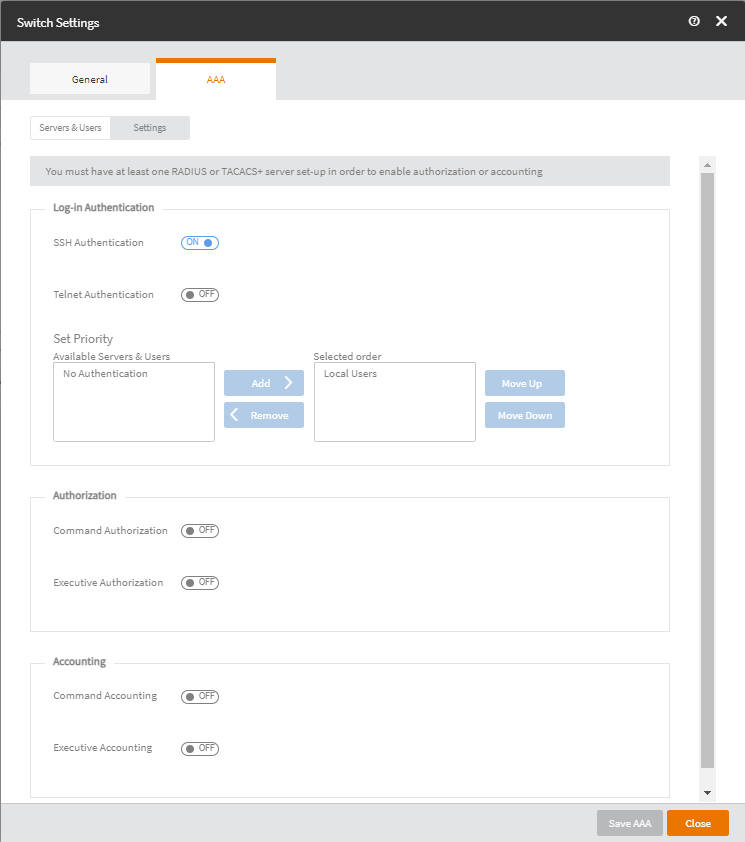
-
Complete the following.
In the Log-in Authentication section,
- SSH Authentication: By default. this option is set to ON.
- Telnet Authentication: Set the switch to ON. By default. this option is set to ON.
In the Set Priority section, select the available servers and users under Available Servers & Users and use the Add > < Remove buttons to add or remove servers and users. Select the local users under Selected order and use the Move Up and Move Down button to set the order.In the Authorization section,- Command Accounting: Set the switch to ON. By default, this option is set to OFF.
- Executive Accouting: Set the switch to ON. By default, this option is set to OFF.
In the Accounting section,- Command Accounting: Set the switch to ON. By default, this option is set to OFF.
- Executive Accouting: Set the switch to ON. By default, this option is set to OFF.
- Click Save AAA, and then click Close.